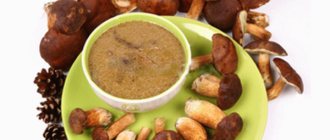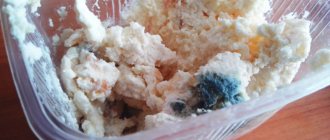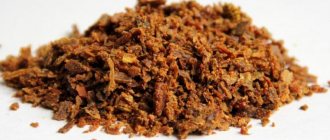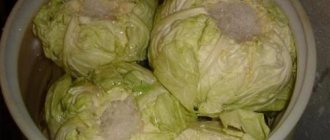How to preserve mushrooms?
If you have mushrooms in your refrigerator and are wondering when they will start to spoil? In this article we will answer all your questions. You will learn how to preserve mushrooms better and longer.
Fresh mushrooms can be stored in the refrigerator for about a week. Once you've made them, you can store them in the refrigerator for another three to five days. Whole mushrooms will stay fresh longer than chopped mushrooms.
Mushrooms are an extremely nutritious and tasty addition to any dish. But unfortunately, they don't stay fresh very long after you get them home from the grocery store.
To make matters worse, mushrooms don't always have a sale or expiration date, so you'll have to judge their freshness for yourself. Both when purchasing them and when assessing their freshness for use at home.
A good rule of thumb is that fresh mushrooms can last about a week in the refrigerator. Depending on the variety, the actual amount of time can range from four days to ten days.
Once you cook the mushrooms, their shelf life will increase by another three to five days.
There are ways to extend the life of your mushrooms if you cannot use them within this period of time.
Freezing your mushrooms will allow them to last 2 to 12 months in the freezer. Dried mushrooms will last up to a year. And pickled or canned mushrooms will last from 4 to 6 months if stored in the refrigerator.
Please keep in mind that these are estimates only. Use your judgment to determine if your mushrooms have gone bad using the information later in this article.
Preparation for long-term storage
Before long-term storage, collected mushrooms:
- They clear away debris and sort through it. All specimens that are unknown or questionable about their edibility are thrown away. Select healthy, hard, dense plates. They clear the soil, cut off the contaminated legs, and remove the damaged parts.
- Rinse with running water. To get rid of insects and worms, prepare a saline solution. Pour cold water into the container, add salt (100-200 g per 5 l). Soak for a period of 20 minutes to 12 hours. Lamellar mushrooms (volnushki, chanterelles, milk mushrooms, etc.) are soaked for 6-12 hours, tubular mushrooms (boletus, boletus, boletus, etc.) - for 20-30 minutes. Mushrooms with a bitter taste (black milk mushrooms) are soaked for up to three days, periodically changing the water.
- Wash again and lay out on a paper towel and allow to dry. Dried mushrooms are inspected - if dark spots appear, they are cut off.
Prepared mushrooms are placed in a paper bag or enamel bowl, which is covered with a paper towel, put in a dark, cool place - a cellar or basement, or better yet, in the refrigerator - there the product will remain fresh longer.
Advice. Do not use a plastic bag as a container - the contents can quickly become moldy and begin to rot.
Where to buy fresh and wild mushrooms
Every day, mushrooms are becoming more and more popular in the food world. Nowadays, farm-to-table cuisine is growing very quickly. The best places to buy fresh wild mushrooms are local, such as a farmer's market or a specialty store with a nature's gifts section. However, when this is not possible, there are several online mushroom sellers that offer quality products for your mushroom purchases.
If you're not sure which mushrooms you should buy, it's always a good idea to speak directly to the farmer or retailer for local recommendations. Feel free to share recipes or personal taste preferences with the farmer or retailer. This information will influence what mushrooms they may recommend based on your taste preferences or recipe. Wild mushrooms are seasonal, which affects both their availability and price, so be prepared for some sellers to not sell certain varieties at certain times. Whenever possible, it's best to eat what's in season, as it will taste best and will likely be the most affordable option.
Some mushrooms are highly toxic, so wherever you choose to shop, always check the retailer's credentials when purchasing wild mushrooms. Do not pick wild mushrooms unless you are with someone who can confidently recognize the difference between safe and poisonous mushrooms.
If you can't find fresh mushrooms at your local market, many online stores sell and ship local mushrooms. Another option is to buy dried mushrooms, which are easy to rehydrate and can be used in many delicious recipes.
Preparatory stages
Before storing dried mushrooms, they should be carefully prepared.
To do this, you need to check them for drying quality. Specimens that are not completely dry, slightly damp and those with soft fibers are not suitable for long-term storage. Over time, a putrefactive process may begin in them, mold may appear, or midges may appear. Excessively overdried mushrooms, which crumble easily, are also not an ideal option for storage. It is better to grind them, adding salt and seasonings. Pour the resulting mixture into glass or ceramic containers. The result is a flavorful additive for soups and main courses.
The next stage is preparing the container. The following can be used as a container for storing forest gifts for the winter:
- Paper bags, cardboard boxes. This is a budget, compact and convenient option that provides access to oxygen. However, it has a significant drawback - over time, small insects can appear there.
- Cotton bags with drawstrings. With this storage method, the mushrooms will be able to “breathe,” but there is also a high probability of pests appearing. To avoid this, the bags can be soaked in a salty solution and dried. The resulting salt crystals will prevent insects from getting inside and protect the workpiece from damage.
- Glass jars with lids protect against moths, but at the same time block the flow of oxygen. It is better to choose a container made of dark glass to reduce exposure to sunlight. Screw-on or nylon lids are suitable. With this method, it is necessary to open the containers at least 2 times a month and leave them for some time to ventilate.
- Ceramic containers with clips, designed for bulk products. Ideally protects against foreign odors and small bugs, but only if the mushrooms in it are really dry.
- Vacuum containers are the best option, despite their high cost.
Next, you need to decide on the storage location for the workpiece. Mushrooms are very susceptible to foreign odors and moisture, so the next stage should be approached with special responsibility. The place should be dry, providing good air circulation, with a temperature of no more than 15 degrees. This could be the top shelf of a closet, closet or attic. It is also important to avoid sudden changes in temperature and proximity to aromatic components.
How to store mushrooms for optimal freshness?
How long your mushrooms will stay fresh depends largely on which method you choose to store them.
There's more to it than just pulling them out of your shopping bag when you get home and throwing them in the fridge.
Depending on how much extra work you want to do, you can make your mushrooms last anywhere from a few extra days to a whole year!
How to store mushrooms so they last longer
Fried or fried, it doesn't matter. No matter how you cook mushrooms, these mushrooms are full of flavor and nutrition. When you're foraging (from the wild or from the grocery store) for your kitchen, one thing you may be wondering is how do you store mushrooms to keep them fresh? We have the answers.
Mushrooms should be stored at 40°F or below
According to the FDA, perishable foods such as mushrooms should be stored in a clean refrigerator at 40°F or 4°C. If your refrigerator has a built-in thermostat, you should check the dial or screen regularly and adjust it if necessary. On the other hand, you can use a kitchen thermometer to check the temperature.
Mushrooms are best stored in a damp cloth
There's nothing worse than taking vegetables out of the refrigerator and realizing they're old and dry. To solve this problem, store the mushrooms in their original packaging or in a porous paper bag and wrap the mushrooms in a clean, damp cloth before putting them in the refrigerator. “If you want your mushrooms to last longer and stay fresh, this method adds moisture.” They can be stored in the refrigerator for up to one week using this method.
“Storing mushrooms in plastic wrap may seem like a logical way to store them, but you need to avoid it. When a product is wrapped too tightly, it can start to sweat, which will affect its quality.”
Never freeze fresh mushrooms
Looking for a way to extend the shelf life of mushrooms? While many types of food can be frozen and cooked later, it is not recommended to freeze raw mushrooms because they will not stay fresh, but remember that fried mushrooms can be stored in the freezer for up to a month.
In the freezer
Mushrooms can be stored in the freezer for several weeks or even months. In order for them to preserve their taste and aroma, proper preparation must be carried out. Some types require mandatory cooking. For example, chanterelles taste bitter after freezing, so they are boiled for several minutes to remove the bitterness.
A kilogram of mushrooms is boiled with the addition of:
- 1 onion;
- 1 carrot;
- 6-7 peppercorns (allspice and black);
- 2-4 cloves (optional);
- 2 bay leaves.
Add just a little salt to the water. It is necessary to bring it to a boil and cook the mushrooms for 5 minutes, skimming off the foam. Then place in a colander, let cool and drain. Before freezing, it is advisable to blot the mushrooms with a towel and divide into portions. Each serving size should be suitable for approximately one cooking session. This is important because re-freezing food is not recommended. You should leave as little air in the packaging as possible. It is best to use special bags or containers for freezing.
You can store boiled mushrooms in the freezer at a temperature of -18°...-24° for a whole year. If the temperature is lower (-12°...-14°), then the shelf life is reduced to 4 months.
After defrosting, the mushrooms undergo heat treatment again. What to cook from them is up to the hostess to decide.
When can you tell that mushrooms have gone bad?
Mushrooms show some pretty clear signs once they start to go bad. So as long as you check before you eat them, you shouldn't accidentally get sick from mushrooms that you thought were fine.
Bad smell
If your mushrooms have a rancid odor when you open the container, this is a good sign that they have already gone bad and should not be eaten.
Bad mushrooms can emit a variety of strange odors, which can range from ammonia-like odors to fishy odors. Different bacteria on mushrooms can cause different odors.
Fresh mushrooms should only have a mild, earthy odor. So if you have stinky mushrooms, they're probably too far gone to try and save.
Wrinkled skin
Mushrooms are mainly aquatic. So when they are fresh they should be plump and smooth. Wrinkles on your mushrooms mean they are starting to become a little dehydrated.
They are not necessarily a sign that your mushrooms are already bad if there are only small wrinkles. But you must cook them right away if you want to use them before they spoil.
Once the mushrooms start to really shrink, they've probably gone too far and should simply be composted or thrown away.
Dark spots
The mushrooms will begin to develop dark spots as they begin to spoil. Again, this doesn't necessarily mean they are too spoiled to eat if the stains are minor, but it is a warning sign that they are about to go bad.
Cook the mushrooms within a day or two, or discard them if you're unsure.
In addition to dark spots, the mushrooms may begin to take on a darker color overall. Try to pay attention to this when choosing mushrooms in the store.
Darker mushrooms will probably only have a few days left before they go bad, so don't buy them unless you plan to use them right away.
Slimy shrooms
When your mushrooms get to the point where their skin is slimy, they've definitely gone too far to eat. This means that they have begun to rot and bacteria are already destroying them.
It usually takes two weeks or more in the refrigerator for the mushrooms to reach this point. It's better to quit at this point than risk getting sick. They probably won't taste very good when they get to the slimy stage.
If you've looked for all these characteristics and are still not sure whether your mushrooms are edible or not, it's best to throw them away. God saves man, who save himself!
Why do they do this?
Those who are interested in how and how long you can store frozen mushrooms in the freezer should know why this is necessary. Let us immediately note that this product is subsequently used to prepare many different dishes. They can be included in sauces, pies, juliennes, soups and other delicacies. Here a lot depends on the wishes and imagination of the cook.
Young housewives who are trying to figure out how long frozen mushrooms can be stored in the refrigerator freezer will be surprised to learn that they can even be pickled in the future. Moreover, as a result, they turn out to be as crispy as when using fresh raw materials. By the way, you can immediately lower the mushrooms into a pan of boiling water without waiting for them to thaw.
Other methods
You can also dehydrate mushrooms and turn them into powder, but we don't have much experience with this. You will need to use some kind of food, dehydrate it or cook it at 125°F for 8-9 hours.
Dehydration basically dries out the mushroom with a water content of 90-95%. This slows down the rate of its deterioration. You will still need to store it in an airtight container to prolong its shelf life.
Another way to extend the shelf life of mushrooms is to use food that you put in the refrigerator. You simply place them in a food storage container. It helps regulate the flow of oxygen and carbon dioxide.
What varieties are suitable for blanks?
Let us immediately note that for such purposes you need to use any edible varieties collected in the forest. You can harvest chanterelles, honey mushrooms, porcini mushrooms and even champignons for the winter. The main thing is that they are strong, intact, young and freshly harvested.
Those who have not yet figured out how long frozen mushrooms can be stored in the freezer will probably be interested in the information that not only fresh, but also pre-boiled or fried products are subjected to such processing. The second method allows you to use broken and unsalable raw materials.
Related questions
Is it possible to freeze mushrooms? – Mushrooms can be frozen. It's best to cook them first before freezing them. How to store mushrooms? – Mushrooms are best dehydrated, sealed, and then frozen for maximum shelf life. Can old mushrooms cause nausea? – Yes, it is not recommended to eat old mushrooms.
Video lesson: Frozen champignons. How to properly freeze mushrooms
We recommend – Porcini mushrooms
Freezing methods
Experienced housewives include not only fresh mushrooms in their home freezes for the winter, but also various semi-finished products. The type of protein raw material affects the way it is frozen:
- Boletus mushrooms, boletus mushrooms, boletus mushrooms, fly mushrooms, and forest champignons are prepared raw in the freezer. But if desired, semi-finished products are made from them and also frozen.
- Morels and strings are frozen boiled. They contain gelvelic acid (having hepatotropic and hemolytic effects), which is eliminated only with prolonged cooking.
- Ryzhiki, russula, milk mushrooms, and fried mushrooms are frozen after boiling, stewing or frying.
- Chanterelles and honey mushrooms are used to make a semi-finished product that can be frozen. They are boiled or fried. After cooking, the chanterelles do not become bitter, and the honey mushrooms soften.
The whole mushroom is the priority raw material for freezing, but only caps or pieces are also subjected to this process. For successful storage of the product, it is important not only to decide on the method of freezing the product, but also to do all the manipulations correctly.
Video: Thorough freezing of champignons in the freezer
Raw
After collection, it is recommended to freeze the raw materials in the near future, but no later than 24 hours. Be sure to clean it of dirt, sand, adhering grass or leaves. It is better to refrain from washing before freezing. But if the mushrooms are too dirty, then after washing they are thoroughly dried.
Small mushrooms and mushrooms are frozen whole, and large ones are chopped into 1-2 cm slices. Then they are distributed and sent to the freezer compartment of the refrigerator for 2-3 hours. After freezing, they are scattered into bags or plastic trays for long-term storage at sub-zero temperatures.
The mushroom aroma will be preserved better if the containers or bags are filled to capacity, leaving virtually no air.
Important! For freezing, select small, dense mushrooms that hold their shape well after thawing.
Boiled
Before cooking, the mushrooms are pre-cut. Boil for 5-10 minutes, then drain on a sieve. This manipulation allows the liquid to drain. After cooling, put them into portioned bags and place them in the freezer. Boiled mushroom is often frozen together with the broth. This semi-finished product allows you to prepare dishes with a pleasant mushroom flavor.
The cooking time differs for different types of mushrooms. For forest champignons, cook for 5 minutes, chanterelles or aspen boletus for 20 minutes, boletus, boletus and honey mushrooms for 30 minutes. If honey mushrooms are boiled, then change the water once.
Fried
Various types of mushrooms are suitable for freezing after frying. The raw materials are cut into small slices and fried in a frying pan with a small addition of vegetable oil until golden brown. Salting or adding spices is not recommended. Roasting lasts about 20 minutes.
After the frying process, the mushrooms are laid out on paper napkins, which will absorb excess fat. After this, portion packaging is done. Frozen fried mushroom is added immediately, without defrosting, when preparing a variety of dishes.
Salted or pickled
Some housewives practice putting pickles in the freezer. After completely draining the brine and slightly drying them, they are packaged in bags for freezing. But after defrosting, the quality of protein raw materials deteriorates. Taking this into account, many people boil mushrooms, freeze them, and marinate them after defrosting.
Salted mushrooms tolerate freezing better than those that have been pickled. Before exposing pickles to sub-zero temperatures, excess liquid is drained from them. But this is an optional manipulation. Properly salted mushrooms can be stored without problems in a cool place without freezing.











